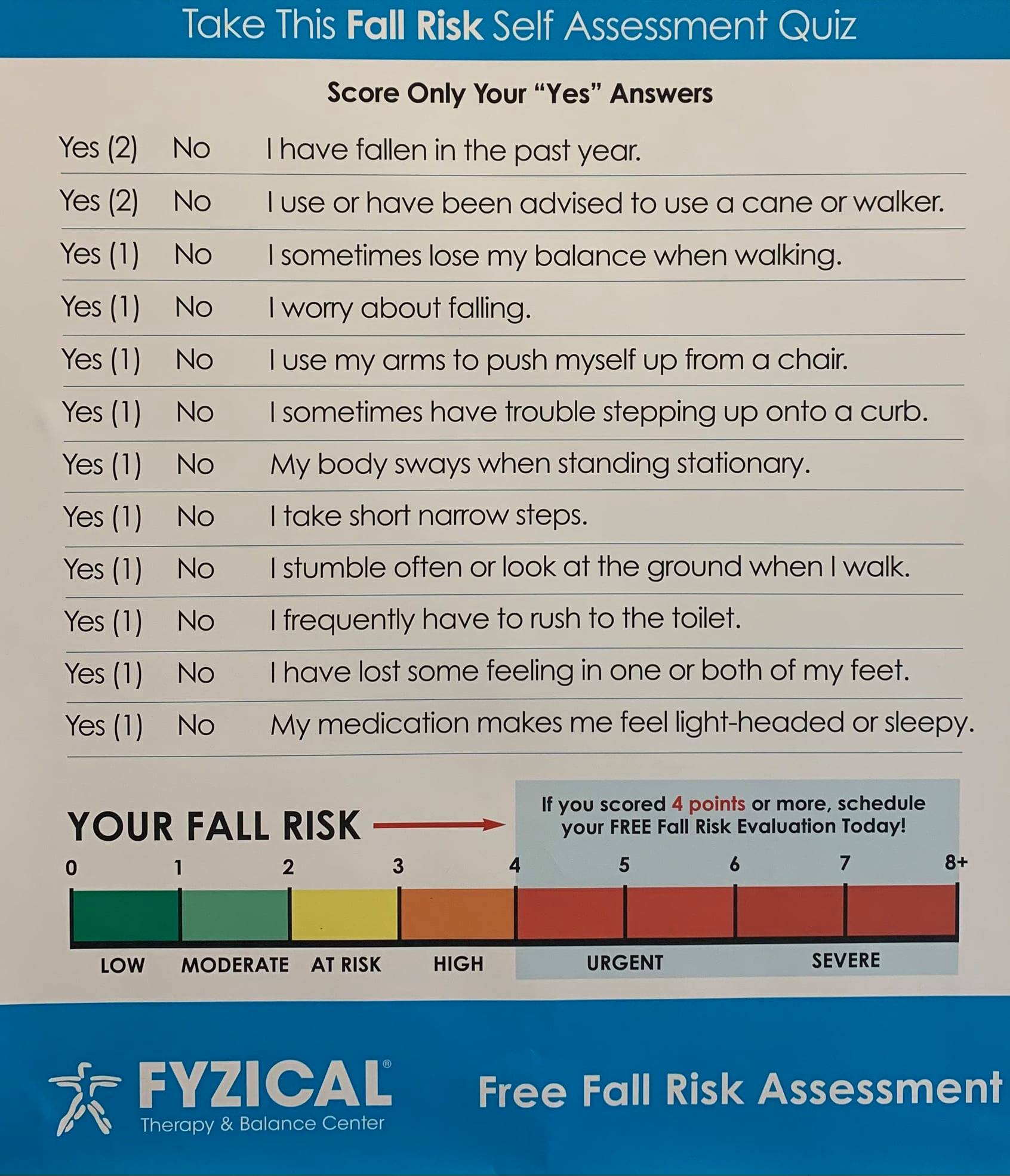Get This Report on Dementia Fall Risk
Get This Report on Dementia Fall Risk
Blog Article
The Best Guide To Dementia Fall Risk
Table of ContentsThe Ultimate Guide To Dementia Fall RiskNot known Facts About Dementia Fall RiskLittle Known Questions About Dementia Fall Risk.4 Simple Techniques For Dementia Fall RiskDementia Fall Risk Can Be Fun For Everyone
The FRAT has 3 areas: fall threat condition, threat aspect checklist, and action strategy. A Loss Threat Standing includes data regarding background of current falls, drugs, mental and cognitive status of the client - Dementia Fall Risk.If the client ratings on a risk factor, the corresponding number of factors are counted to the individual's autumn risk rating in package to the much right. If a person's autumn danger rating completes five or greater, the person is at high risk for falls. If the individual ratings just 4 points or reduced, they are still at some threat of falling, and the nurse needs to use their finest scientific evaluation to manage all loss risk factors as part of an all natural care plan.
These basic approaches, as a whole, aid create a safe setting that minimizes accidental drops and defines core safety nets for all individuals. Indications are crucial for individuals in jeopardy for drops. Doctor need to acknowledge who has the problem, for they are in charge of carrying out actions to promote person safety and security and protect against drops.
The Ultimate Guide To Dementia Fall Risk
Wristbands need to consist of the patient's last and very first name, day of birth, and NHS number in the UK. Only red color needs to be used to indicate unique person standing.
Things that are also much may need the client to reach out or ambulate needlessly and can potentially be a risk or add to falls. Aids protect against the individual from heading out of bed without any type of aid. Nurses reply to fallers' telephone call lights quicker than they do to lights started by non-fallers.
Aesthetic problems can greatly cause drops. Hip pads, when put on appropriately, may decrease a hip crack when loss occurs. Keeping the beds closer to the flooring lowers the risk of falls and severe injury. Placing the mattress on the floor substantially reduces fall danger in some medical care settings. Reduced beds are designed to lessen the distance an individual drops after moving out of bed.
The Buzz on Dementia Fall Risk
Clients that are high and with weak leg muscle mass who attempt to remain on the bed from a standing position are most likely to fall onto the bed since it's too reduced for them to decrease themselves safely. Likewise, if a high client efforts to stand up from a low bed without aid, the client is most likely to drop back down onto the bed or miss the bed and drop onto the flooring.
They're designed to promote timely rescue, not to prevent drops from bed. Distinct alarm systems can likewise Discover More remind the patient not to obtain up alone. Using alarms can also be an alternative to physical restrictions. In addition to bed alarms, raised supervision for risky clients additionally may help stop drops.

Individuals with an evasion gait boost autumn possibilities drastically. To minimize autumn danger, footwear ought to be with a little to no heel, slim soles with slip-resistant tread, and sustain the ankles. Recommend person to utilize nonskid socks to prevent the feet from gliding upon standing. Nevertheless, urge individuals to wear suitable, well-fitting shoesnot nonskid socks for motion.
Not known Details About Dementia Fall Risk
Patients, specifically older grownups, have minimized visual capacity. Lighting an unfamiliar atmosphere helps increase presence if the individual must stand up during the night. In a research study, homes with ample lights report less falls (Ramulu et al., 2021). Improvement in lighting in the house may decrease fall prices in older adults (Dementia Fall Risk). The usage of gait belts by all healthcare suppliers can advertise safety and security when assisting people with transfers More Info from bed to chair.

Sitters work for ensuring a safe and secure, secured, and safe setting. However, research studies demonstrated really low-certainty evidence that sitters minimize autumn danger in intense treatment hospitals and just moderate-certainty that options like video clip surveillance can review lower caretaker use without raising loss risk, suggesting that caretakers are not as useful as initially thought (Greely et al., 2020).
The Single Strategy To Use For Dementia Fall Risk
.png)
Increased physical fitness lowers the threat for drops and restricts injury that is sustained when autumn takes place. Land and water-based workout programs might be in a similar way helpful on balance and stride and thereby lower the danger for drops. Water exercise may add a favorable benefit on equilibrium and gait for females 65 years and older.
Chair Surge Exercise is a simple sit-to-stand workout that aids reinforce the muscles in the thighs and butts and improves mobility and independence. The goal is to do Chair Increase workouts without utilizing hands as the customer ends up being more powerful. See resources section for a detailed direction on how to do Chair Rise workout.
Report this page